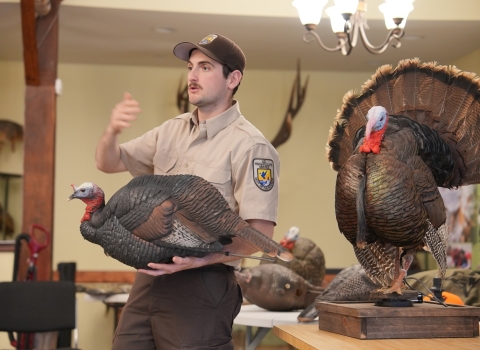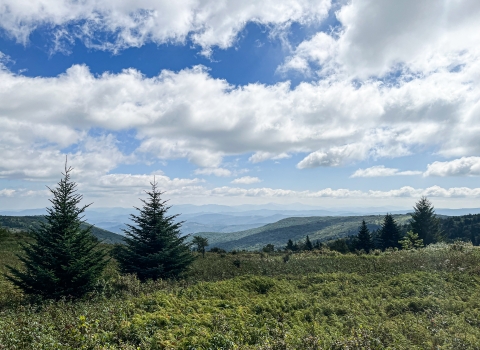Ten years ago, a brown pelican was rescued from the Deepwater Horizon oil spill. He was eventually returned to the waters of the Gulf, but before being released was fit with a leg band bearing his new name—A04. And now, A04 has become part of an even bigger success story than its survival alone might suggest. He’s nesting on Queen Bess Refuge—one of thousands of nesting pairs that are making the first post-restoration nesting season on there a huge success.
In the years since the Deepwater Horizon oil spill, the Trustees have worked tirelessly to restore habitat injured by the spill. One of our earliest and most significant achievements is restoration of Queen Bess Island, which was not only “ground zero” for coastal impacts of the spill but also a bellwether for the coastal land loss in Louisiana as a whole, having been reduced over time to just a small fraction of its original size.
“This island was a mess; an absolute mess. A lot of birds were oiled. A lot of the young were oiled,” stated Todd Baker, Biologist with the Louisiana Department of Wildlife and Fisheries.
The project to restore bird habitat on Queen Bess Island, began in November 2019 and was completed in a five -month window when birds were not nesting on the island. The restored island now includes 30 acres of brown pelican habitat and seven acres of tern and skimmer habitat. Biologists have observed 18 species nesting there this season, including tricolored herons, reddish egrets, roseate spoonbills, American oystercatchers, great egrets, and snowy egrets.
The success of the project is due in large part to the continued collaboration of the federal and state partners, and the persistence of all the stakeholders involved. The restoration project has been three years in the making, and while small in acreage compared to the larger restoration effort in coastal Louisiana, the island has a tremendous benefit to the waterbird populations of Louisiana and the larger northern Gulf Coast. Queen Bess Island is utilized by more than 60 species of birds and is the third largest colonial waterbird colony in Louisiana.
“Going from a pelican rescued during the early days of an oil spill when there didn’t even seem like there could be light at the end of the tunnel, to 10 years later a survivor, and now nesting on a restored island,” said John Tirpak, Deputy Assistant Regional Director of Ecological Services with the U.S. Fish and Wildlife Service. “We are all much stronger than even we know, and all it takes is for us to imagine a brighter future and then will it into existence,” Tirpak added.
Welcome to Queen Bess, A04!
Stay tuned to the State of Louisiana’s Queen Bess Island news page for more on the project and how we’re monitoring its success.




